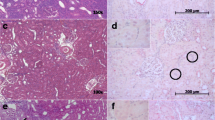Summary
There is a compelling need to discover clinically relevant pharmacological strategies to broaden the narrow therapeutic index of cyclosporin, or to develop a new method for nontoxic and gene-targeted immunosuppression that induces donor-specific transplantation tolerance.
We examined the effects of anti-intercellular adhesion molecule-1 (ICAM-1) antisense oligonucléotides, which act synergistically with cyclosporin because their mechanism of action and metabolism are both distinct from those of cyclosporin.
To attempt to induce donor-specific transplant tolerance without relying on nonspecific immunosuppressants, we administered allochimeric major histocompatibility complex (MHC) class I molecules genetically engineered to bear donor-type antigenic determinants on host-type backbones. Two cryptic tolerogenic amino acid epitopes were localised in the a α1 helical region of the rat RT1.Au class I MHC alloantigen. We substituted nucleotide sequences encoding all 9 (α1h u62–77-RT1.Aa), the first 4 (α1h u62–69-RT1.Aa) or the last 4 (α1h u70–77-RT1.Aa) α1 helical RT1.Au polymorphic amino acids in RT1.Aa cDNA.
Untreated ACI (RT1.Aa) recipients reject Wistar Furth (WF; RT1.Au) heart allografts at a mean survival time of 8.9 ± 1.0 days. A single injection via the portal vein of 10µg of α1h u62–77-RT1.Aa protein alone was ineffective, but α1h u62–69-RT1.Aa protein alone prolonged the survival of WF heart allografts to 14.0 ± 0.8 days. Administration of 10µg of α1h u70–77-RT1.Aa protein induced tolerance towards WF grafts (>180 days), but not towards third-party Brown Norway (BN; RT1.An) heart allografts. When α1h u62–69-RT1.Aa protein was combined with oral cyclosporin 4 mg/kg/day on days 0 to 6, ACI recipients accepted WF heart allografts (>180 days); cyclosporin alone only extended graft survival to 14.3 ± 3.0 days. The effect was alloantigen-specific, because the same combination protocol did not affect the survival of third-party BN heart allografts. Tolerant ACI recipients bearing WF heart allografts for > 100 days subsequently accepted second WF heart allografts (>50 days) but rejected BN heart allografts. Thus, selected donor α1 helical amino acids superimposed on the host’s class I MHC sequence induce donor-specific tolerance.
Similar content being viewed by others
Références
Lindholm A, Kahan BD. Influence of cyclosporine pharmacokinetic parameters, trough concentrations and AUC monitoring on outcome after kidney transplantation. Clin Pharmacol Ther 1993; 54: 205
Kahan BD, Welsh M, Schoenberg L, et al. Variable oral absorption of cyclosporine: a biopharmaceutical risk factor for chronic renal allograft rejection. Transplantation 1996; 62: 599
Murgia MG, Jordan S, Kahan BD. The side-effect profile of sirolimus: a phase I study in quiescent cyclosporineprednisone-treated renal transplant patients. Kidney Int 1996; 49: 209
Kahan BD. Sirolimus: a new agent for clinical renal transplantation. Transplant Proc 1997; 29: 48
Zimmerman J, Kahan BD. Pharmacokinetics of sirolimus in stable renal transplant patients after multiple oral dose administration. J Clin Pharmacol 1997; 37: 405
Cosimi AB, Conti D, Delmonico FL, et al. In vivo effects of monoclonal antibody to intercellular adhesion molecule-1 (CD54) in nonhuman primates with renal allografts. J Immunol 1990; 144: 4604
Stepkowski SM, Tu Y, Condon TP, et al. Blocking of heart allograft rejection by intercellular adhesion molecule-1 anti-sense oligonucleotides alone or in combination with other immunosuppressive modalities. J Immunol 1994; 153: 5336
Stepkowski SM, Wang ME, Amante A, et al. Antisense ICAM-1 oligonucleotides block allograft rejection in rats. Transplant Proc 1997; 29: 1285
Wang M, Stepkowski SM, Wang ME, et al. Induction of specific allograft immunity by soluble class I MHC heavy chain protein produced in a baculovirus expression system. Transplantation 1996; 61: 448
Ghobrial R, Hamashima T, Stepkowski SM, et al. Induction of transplantation tolerance by chimeric donor/recipient class I RT1.Aa molecules. Transplantation 1996; 62: 1002
Author information
Authors and Affiliations
Rights and permissions
About this article
Cite this article
Kahan, B.D. Nouvelles strategies thérapeutiques en immunosuppression. BioDrugs 8 (Suppl 1), 19–22 (1997). https://doi.org/10.2165/00063030-199700081-00009
Published:
Issue Date:
DOI: https://doi.org/10.2165/00063030-199700081-00009




